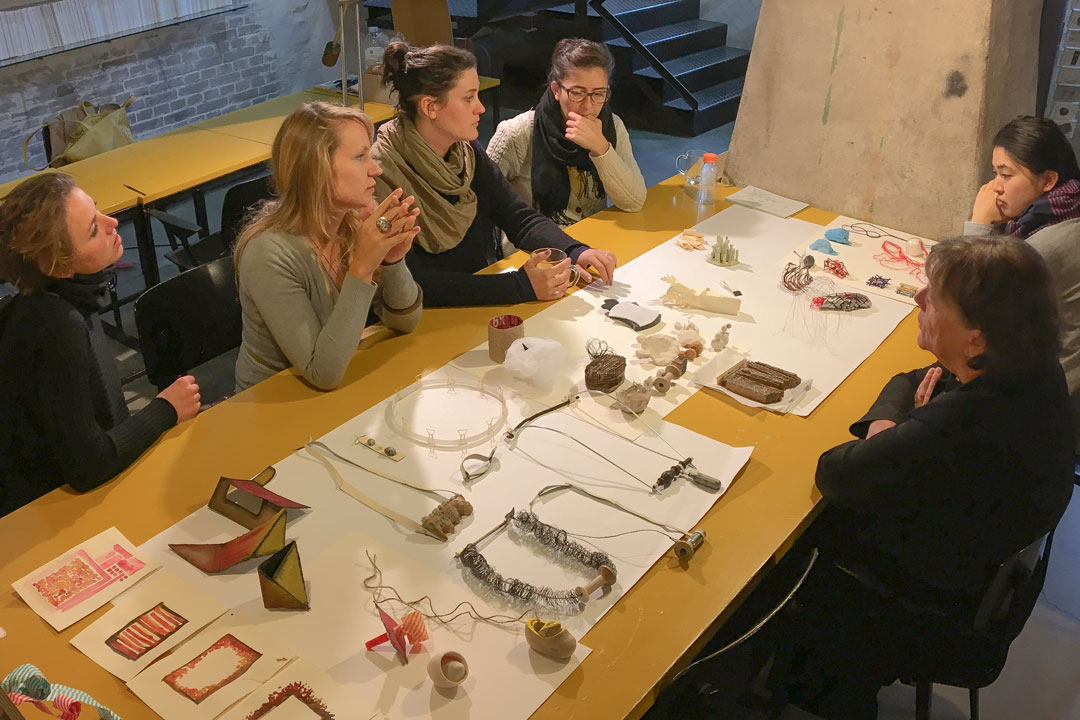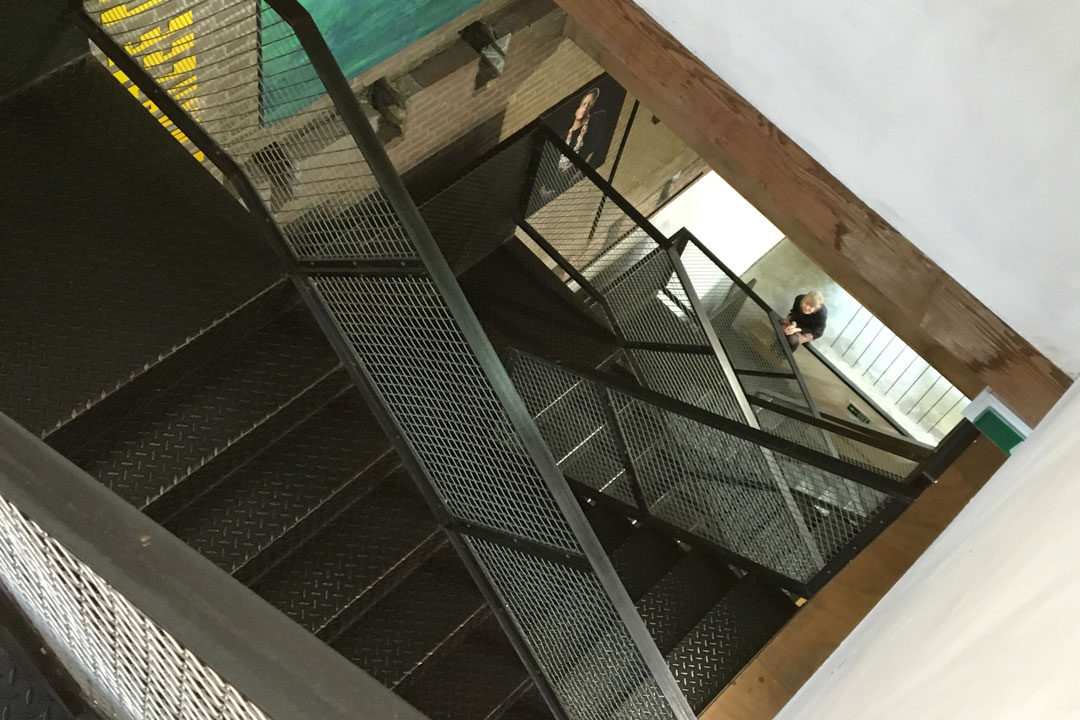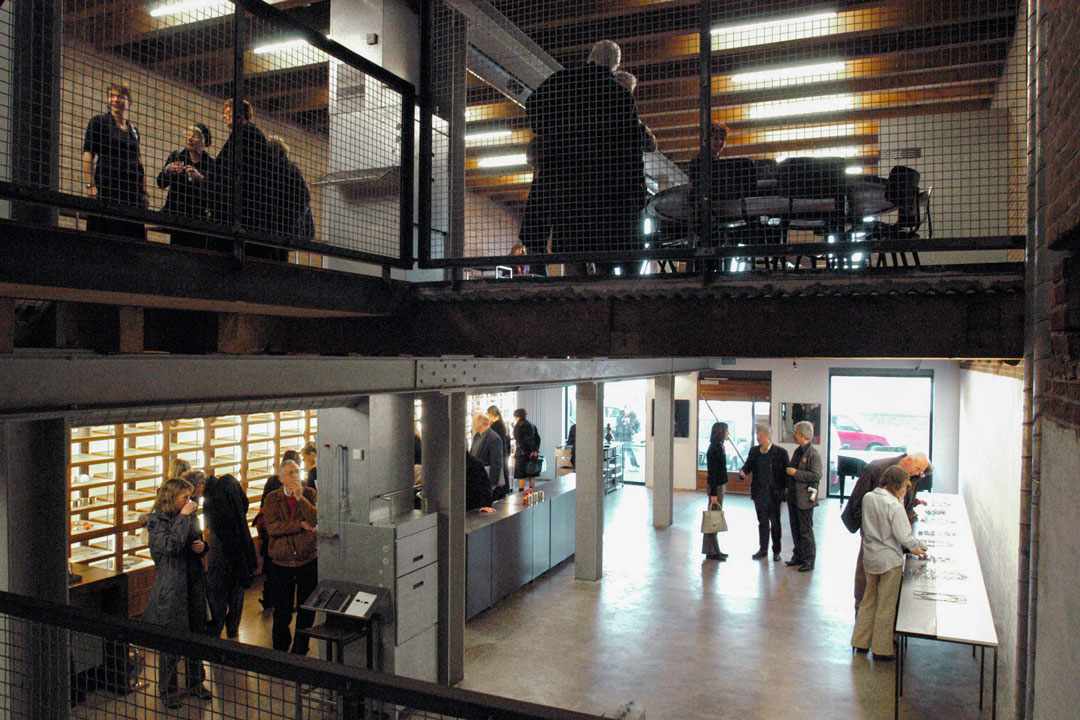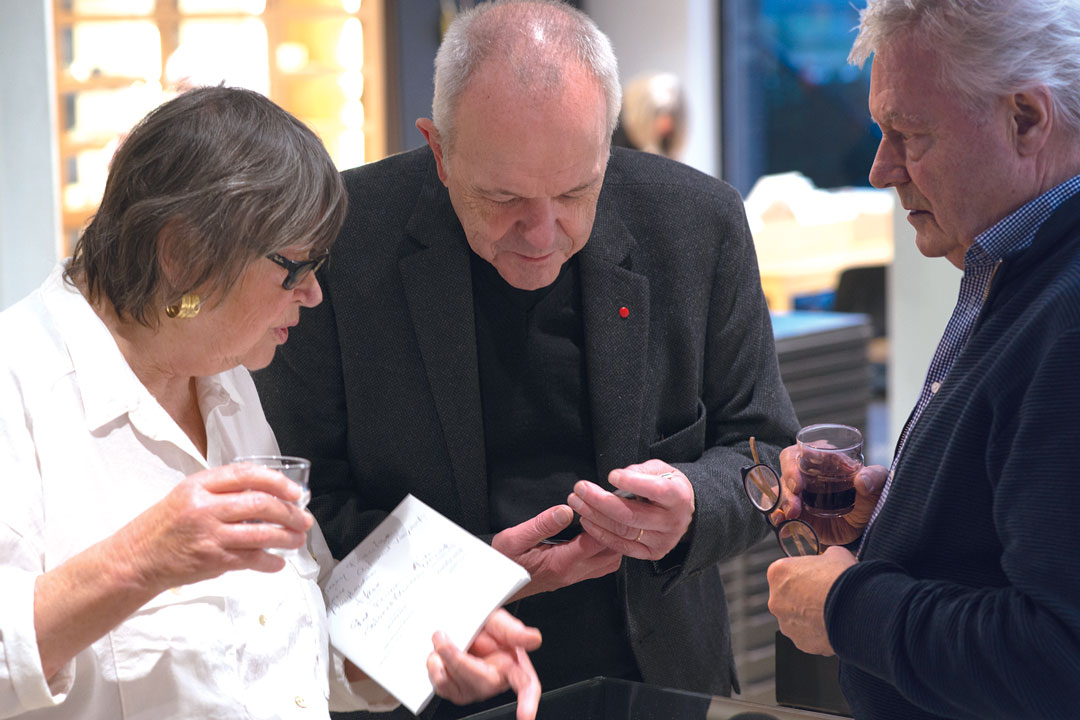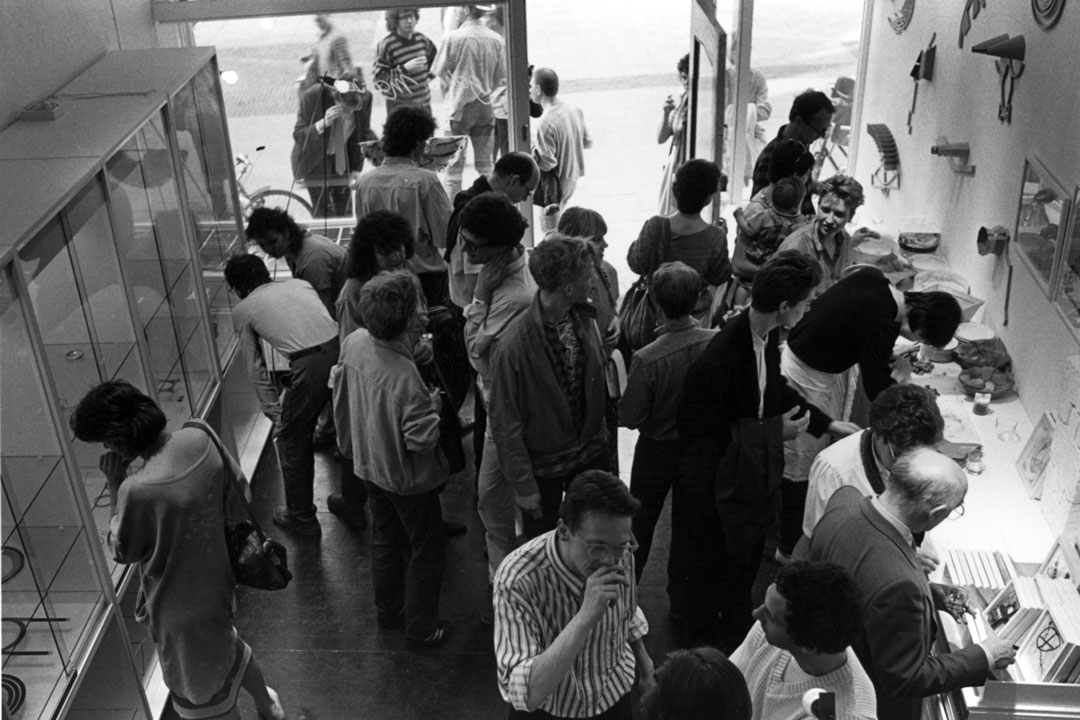History
History
In 1979 Marie-José van den Hout opened a small gallery on the Lage Hezelstraat in Nijmegen, a Dutch city on the banks of the River Waal, in the province of Gelderland. At first, she showed jewellery made by her brother in the front room of the gallery, and fine art in a white-tiled room at the back of the building. After a few years, Marie-José decided she wanted to specialise in a different kind of jewellery so, in 1987 the gallery moved to a larger space on Ganzenheuvel and began to show jewellery by local artists such as Herman Hermsen and Nel Linssen, who both lived in Nijmegen.
In 1989, celebrating the gallery’s tenth anniversary, Marie-José organised an exhibition of combs. Eventually travelling to Japan, Germany, Italy and Switzerland, the exhibition brought Marzee international recognition. Following the success that grew from the combs show, the gallery moved again in 1995, this time to the building it occupies today – a former grain store on the banks of the river Waal which was restored from a ruin to house the gallery and the Marzee Collection. The building, originally named De Gouden Schepel (The Golden Bushel), was constructed in 1904 using beams from a seventeenth century structure on the same site and sympathetically renovated by architects Bert Dirxx and Peter Groot of Dirrix Van Wylick Architects in Eindhoven. With the addition of a seven metre high glass house on the side of the building, an iron staircase running through the centre and high windows replacing the shutters to give a view across the river, Marzee is now a magnificent four-storey structure with an unprecedented 850m2 of exhibition space.
1979 – Marzee opens in Nijmegen’s Lange Hezelstraat as a gallery for jewellery and fine art
1986 – Marzee holds its first Graduate Show, exhibiting work by students from Dutch schools in Amsterdam, Arnhem and Maastricht
1987 – The gallery moves to a larger space on Ganzenhevel and shifts its focus to contemporary jewellery
1989 – Marzee celebrates its tenth anniversary with Kammen (Combs), an exhibition of 100 combs made by international jewellery artists invited by Marie-José. Following its success in Nijmegen and at the Boymans van Beuningen Museum in Rotterdam, the exhibition travels to Japan, Germany, Italy and Switzerland and brings Marzee international recognition
1993 – The gallery holds an exhibition of amulets made by its artists for Marie-José who had broken her back in a serious fall in 1992
1995 – Marzee moves to a 850m2 restored grain store on the Waalkade, making it the largest independent gallery for jewellery in the world
The Marzee Graduate Show becomes international, showing work by students from schools and academies from all over the world
1997 – Jewellery, the Choice of launches in Amersfoort
1998 – Feldversuch, showing work by Dorothea Prühl’s students at Burg Giebichenstein, launches our Schools project
1999 – The first Marzee Prize is awarded to German artist Dorothea Prühl
2004 – To celebrate the gallery’s 25th anniversary, the Marzee Collection is opened to the public
2019 – Present – 40 Years of Galerie Marzee opens for our 40th anniversary. Each of the gallery’s artists shows a new work alongside a gift for Marie-José, presented in a small wooden box, creating an intimate and personal history of the last forty years
The jewellery collection of Jur and Thea van Lee-Ellis, close friends with Marie-José, gift their collection to the Marzee Collection Foundation in celebration of the 40th anniversary and in honour of what would have been Jur’s 100th birthday
Marie- José is awarded the Order of Oranje-Nassau and named Gallerist of the Year at Rhode Island School of Design. She also curates the Art Room for the third edition of the Museo del Gioiello in Vicenza, Italy
The first Alumni exhibition is held, featuring work by Herman Hermsen and alumni from the University of Applied Sciences Düsseldorf
2020 – The Gerda Sondag Collection, gifted to the Marzee Collection Foundation in 2018, is exhibited for the first time

